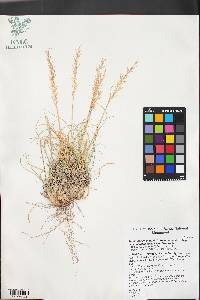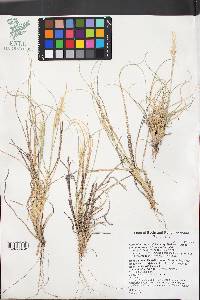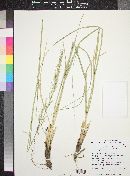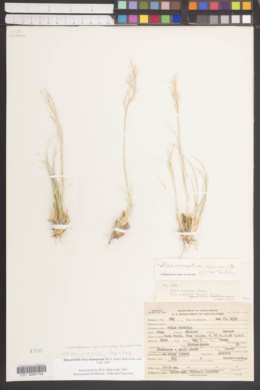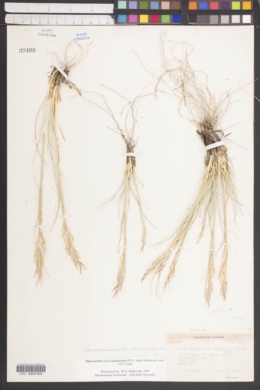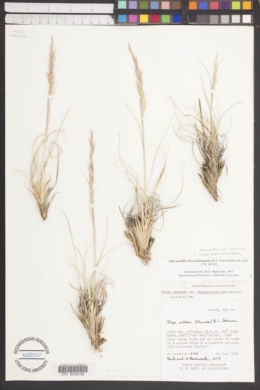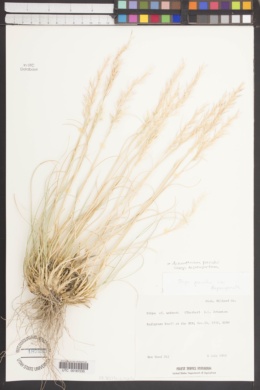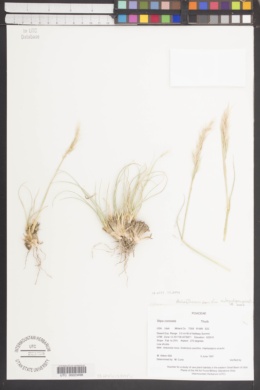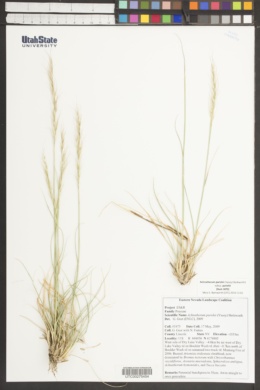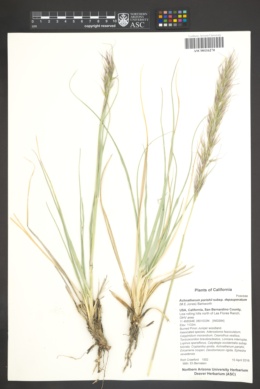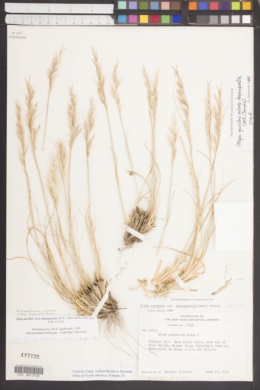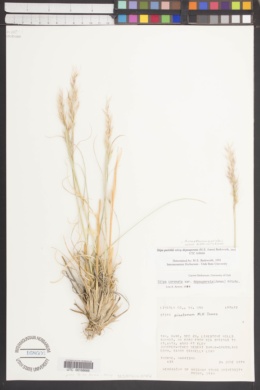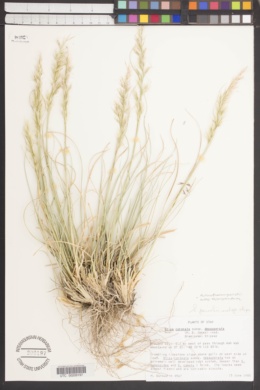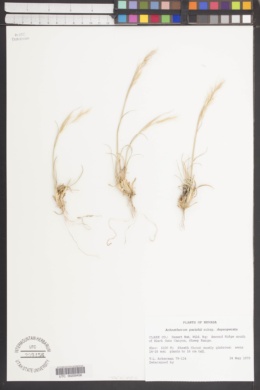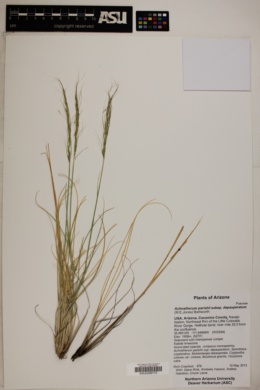Achnatherum parishii subsp. depauperatum
|
|
|
|
Family: Poaceae
Low Needlegrass
[Stipa parishii var. depauperata M.E. Jones] |
Culms 14-35 cm tall, 0.8-1.7 mm thick, glabrous. Basal sheath margins glabrous or hairy distally, hairs to 0.5 mm; blades 4-15 cm long, 1-2.5 mm wide, usually 0.5-1.5 mm in diameter and tightly convolute, conspicuously arcuate distally, abaxial surfaces smooth, glabrous, adaxial surfaces scabrous. Panicles 7-12 cm long, 1.5-2.5 cm wide. Florets 4.8-6 mm; paleas densely hairy between the veins, some hairs as long as those on the lemmas; awns 10-17 mm; anthers 2.3-2.8 mm. Caryopses 3-4 mm, fusiform. 2n = unknown. Achnatherum parishii subsp. depauperatum grows in gravel and on rocky slopes, in juniper and mixed desert shrub associations, from central Nevada to western Utah. It differs from A. webberi in its persistent awns and thicker leaves that tend to curl when dry, and from A. parishii subsp. parishii in its smaller stature, glabrous or shortly hairy sheath margins, and densely hairy paleas. FNA 2007, USDA Common Name: little Parish's needlegrass Duration: Perennial Nativity: Native Lifeform: Graminoid General: Tuft-forming perennial bunchgrass to 80 cm tall. The inflorescence to 12 cm long, composed of dense, hairy spikelets. Awns on spikelets each have a single bend; many other Achnatherum species have two bends on each awn. Vegetative: Plants in tight clumps, not rhizomatous, stems 14-35 cm tall, 1-2 mm thick, 3-5 nodes with internodes glabrous or pubescent at the base, basal sheaths flat and ribbonlike as they age, mostly glabrous, ligules 1 mm long, hairs next to ligules to 3 mm long Inflorescence: Panicles 7-12 cm long, 1.5-2.5 cm wide, branches strongly ascending with the longer branches 1.5-4 cm long, glumes subequal to unequal, 3-5 veined, 8-15 mm long, florets 5-6 mm long, lemmas and paleas densely hairy, with palea hairs generally shorter but some as long as hairs on lemmas, awns 1-1.5 cm, anthers 2-4 mm, open spontaneously when ripe, caryopses 3-4 mm long. Ecology: Found on gravel and rocky slopes, desert scrub, and pinyon/juniper woodlands from 900-2700 m. Flowers May-August. Distribution: Arizona, Utah, and Nevada Notes: It is distinguished from A. coronatum by its once-bent awns, its densely pubescent paleas, and its smaller size. It is distinguished from A. scribneri by its shorter calluses and denser lemma hairs, and is distinguished from A. perplexum by its longer lemma hairs. A. parishii ssp depauperatum differs from ssp. Parishii by having basal sheath margins that are glabrous or with distal hairs less than 1 mm long, while ssp parishii-s distal hairs are 1-3 mm long. Subspecies depauperatum also has generally shorter stems at 14-35 cm tall, versus ssp parishii-s height of 20-80 cm. Ethnobotany: Unknown Etymology: Achnatherum means awned scale or awn-scaled and comes from Greek word achne for chaff or glume and ather meaning stalk or barb; Parishii is named after botanical collectors and brothers Samuel Parish (1838-1928)and William Parish (1840-1918), who lived in California and traveled extensively in search of plants. Editor: Lkearsley, 2012 |



